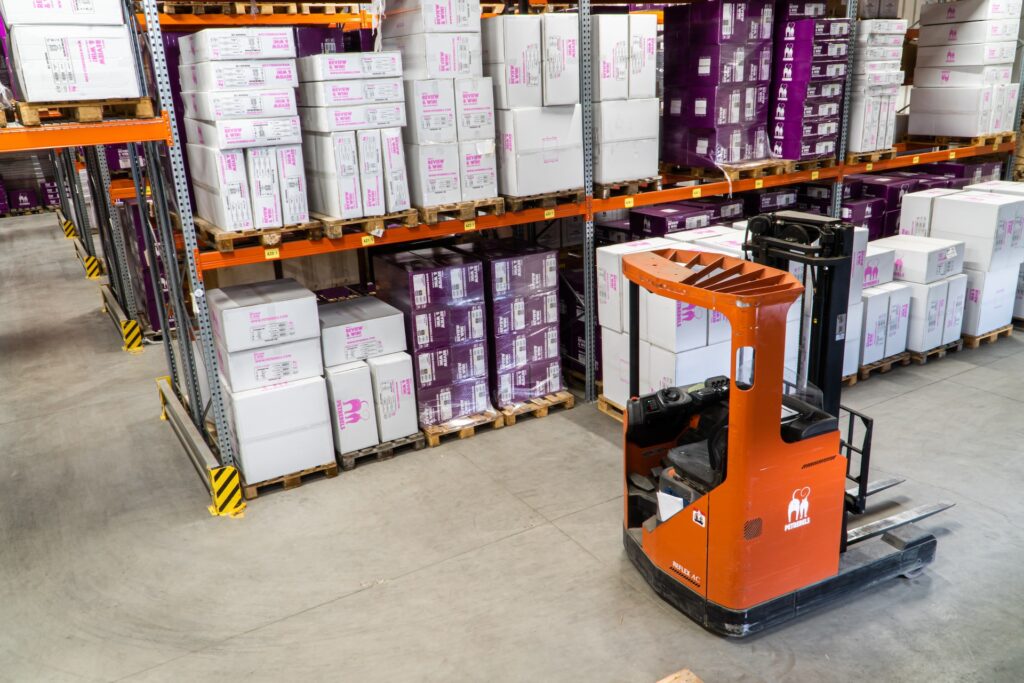An inventory management system is a software application or set of tools that help a business manage its inventory. It typically includes features for tracking stock levels, monitoring changes in inventory, generating reports, and alerting users when it is time to reorder.
As a business owner, you probably have everything you need. Your own employees, products, customers, vendors and more. Part of your success is built on having a good handle on your inventory. Nothing is more important than inventory control, especially when it comes to ecommerce businesses. But more importantly, why you need the services of an inventory management system. This blog will help you understand the top benefits of using an inventory management system.
The inventory management system is an important business process that helps in efficient management of inventories. This process needs to be conducted properly to reap the desired results. Mobile apps for your business can help make this process even more efficient. The post will discuss the top benefits of using an inventory management system as well as how mobile apps can help streamline the process.
Increased efficiency:
Using an inventory management system can significantly increase the efficiency of managing inventory for a business. With an inventory management system, you can:
- Automate processes: An inventory management system can automate many of the tasks involved in managing inventory, such as tracking stock levels, generating reports, and sending alerts when it is time to reorder. This can save time and reduce the risk of errors.
- Streamline data entry: An inventory management system allows you to easily enter and update data related to your inventory, such as product descriptions, prices, and quantities. This helps to ensure that your inventory data is accurate and up-to-date.
- Easily access and analyze data: An inventory management system provides real-time data and insights into your inventory, which can help you make informed decisions about your business. You can easily access and analyze this data to identify trends and patterns, and make data-driven decisions.
- Enhance collaboration: An inventory management system can be accessed by multiple users, which makes it easier for team members to collaborate and share information about inventory. This can help to improve communication and coordination within the team.
Better forecasting:
Forecasting refers to the process of predicting future demand for a product or service. An inventory management system can help a business forecast future demand for its products, which allows it to make informed decisions about how much to produce or order.
Some of the ways that an inventory management system can help with better forecasting include:
- Historical data: An inventory management system stores data about past sales and demand for products, which can be used to forecast future demand. For example, if a product has consistently sold well over the past year, it is likely to continue selling well in the future.
- Trend analysis: An inventory management system can provide data and insights about trends and patterns in demand for products, such as seasonality or changes in customer behavior. This can help a business anticipate changes in demand and adjust its production or ordering accordingly.
- Reorder points: An inventory management system can help a business set reorder points, which are the levels of stock at which a product should be reordered. By setting reorder points based on data about past sales and demand, a business can ensure that it has enough stock to meet future demand.
- Integration with other systems: An inventory management system may be integrated with other systems, such as a customer relationship management (CRM) system or an enterprise resource planning (ERP) system. This can provide a more comprehensive view of the business and help with forecasting demand.

Reduced inventory costs:
By maintaining accurate inventory levels, an inventory management system can help a business maintain accurate inventory levels in several ways:
- Real-time data: An inventory management system provides real-time data about stock levels, which allows a business to quickly identify and address any issues or discrepancies. This can help to reduce the risk of overstocking or understocking, which can lead to excess inventory costs.
- Reorder points: An inventory management system can help a business set reorder points, which are the levels of stock at which a product should be reordered. By setting reorder points based on data about past sales and demand, a business can ensure that it has enough stock to meet demand without overstocking.
- Stock-taking: An inventory management system can automate the process of stock-taking, which is the process of physically counting and verifying the quantity of inventory on hand. This can help to ensure that inventory data is accurate and up-to-date, and can identify any discrepancies or issues that need to be addressed.
- Integration with other systems: An inventory management system may be integrated with other systems, such as a customer relationship management (CRM) system or an enterprise resource planning (ERP) system. This can provide a more comprehensive view of the business and help with forecasting demand, which can further reduce inventory costs.
Improved customer service:
An inventory management system can help a business improve customer service by providing accurate and up-to-date information about product availability. Some of the ways that an inventory management system can help with customer service include:
- Real-time data: Provides real-time data about stock levels and availability, which allows a business to quickly and accurately respond to customer inquiries about product availability.
- Order tracking: Can provide customers with real-time updates on the status of their orders, including information on shipping and delivery. This can help to improve transparency and customer satisfaction.
- Customized alerts: Can be configured to send alerts when certain events occur, such as when a product becomes available or when an order is shipped. This can help to improve communication and keep customers informed.
- Integration with other systems: An inventory management system may be integrated with other systems, such as a customer relationship management (CRM) system or an e-commerce platform. This can provide a more comprehensive view of the customer experience and help to improve communication and responsiveness.
Enhanced security:
An inventory management system can enhance security by providing tools and controls to help prevent theft or loss of inventory. Some of the ways that an inventory management system can enhance security include:
- Access controls: May include access controls, such as user roles and permissions, which can help to prevent unauthorized access to inventory data or actions. For example, you may be able to restrict certain users from viewing or modifying certain data or from performing certain actions, such as placing orders or issuing refunds.
- Auditing and accountability: May include auditing and accountability features, such as logging changes made to data or tracking who made those changes. This can help to improve transparency and accountability within a team and reduce the risk of theft or loss.
- Physical security: An inventory management system may include features for tracking the physical location of inventory, such as by using barcodes or RFID tags. This can help to prevent theft or loss and improve the accuracy of inventory data.
- Data security: An inventory management system should include measures to protect data from unauthorized access or tampering, such as encryption, authentication, and backup and recovery. This can help to ensure the security and confidentiality of inventory data.

Greater visibility:
An inventory management system can provide greater visibility into inventory by providing real-time data and insights, which can help a business make informed decisions about its operations. Some of the ways that an inventory management system can provide greater visibility include:
- Dashboards and reports: An inventory management system can provide dashboards and reports that give you a high-level overview of your inventory, such as stock levels, sales trends, and reorder points. These can help you quickly identify any issues or opportunities and make data-driven decisions.
- Search and filtering: An inventory management system may include features for searching and filtering data, which can help you quickly find the information you need. For example, you may be able to search for specific products or filter data by location, supplier, or category.
- Customized alerts: An inventory management system can be configured to send alerts when certain events occur, such as when stock levels reach a certain threshold or when an order is overdue. This can help you stay informed and take action when necessary.
- Integration with other systems: An inventory management system may be integrated with other business systems, such as a customer relationship management (CRM) system or an enterprise resource planning (ERP) system. This can provide a more comprehensive view of your business and help you make informed decisions based on a wide range of data.
With the help of an inventory management system, your employees can use the intuitive interface to easily update inventory levels, including new items and old ones, and quickly identify where stock is running low. The system also allows you to view everything in a single inventory view, so you can see every item in an instant. We hope you enjoyed our article about the top benefits of using an inventory management system.
Photo by Blake Wisz on Unsplash




2 thoughts on “The Top Proven Benefits of Using an Inventory Management System”